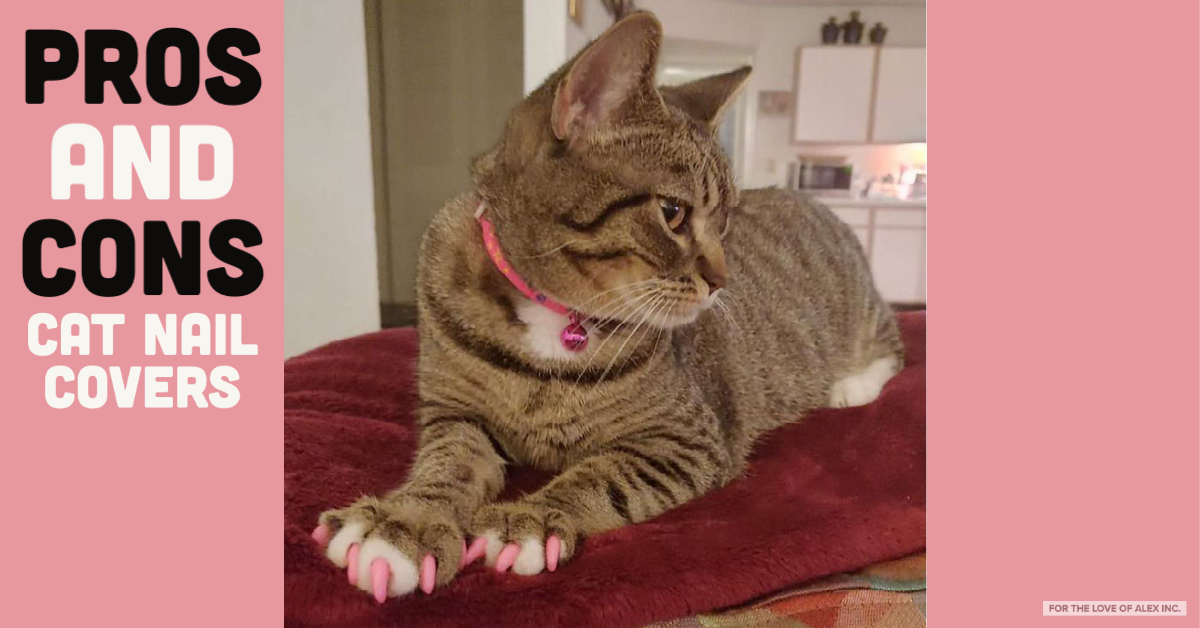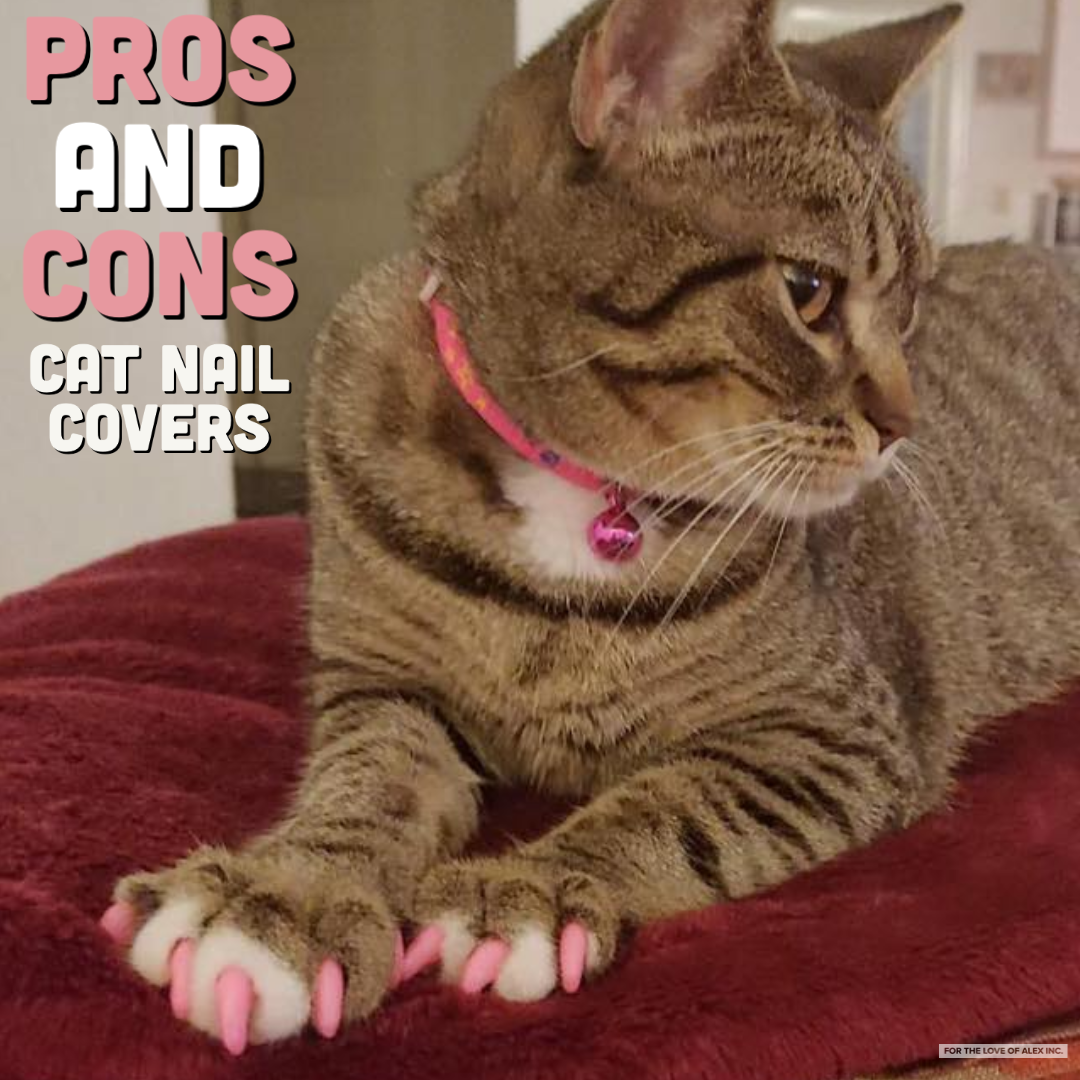Cat nail caps protect furniture and reduce scratching but can cause discomfort and limit natural claw use. They need regular maintenance.
Cat nail caps are small, soft covers glued onto a cat’s claws. These caps prevent damage to furniture and reduce the risk of scratches on humans. They come in various colors and sizes, fitting cats of all breeds and ages.
While they offer protection and peace of mind, they also require regular application, typically every 4-6 weeks. Some cats may find them uncomfortable or may try to chew them off. It’s important to monitor your cat’s behavior and ensure the caps do not cause any issues. Properly applied nail caps can be a useful tool for managing a cat’s destructive scratching behavior.
Introduction To Cat Nail Caps
Cat nail caps are tiny covers for a cat’s claws. They are often made of soft plastic. Their main purpose is to prevent damage from scratches. Cat owners use them to protect furniture and skin.
Nail caps reduce the risk of scratched furniture. They also make playtime safer for both cats and humans. Applying them can be a bonding activity. They do not hurt the cat and can last up to six weeks. They are also available in many colors.
Many pet owners love nail caps. They find them useful and stylish. Nail caps are popular among those with indoor cats. They are also favored by owners wanting to avoid declawing. They offer a safe and humane solution.

Credit: www.pinterest.com
Benefits Of Cat Nail Caps
Cat nail caps help to protect furniture and carpets. They stop cats from scratching and causing damage. This is very helpful for people with nice homes.
Nail caps can reduce the risk of injury to humans and other pets. Cats can’t scratch as deeply when they wear caps. This makes playtime safer for everyone.
Cat nail caps come in many colors. They can make your cat look cute and stylish. Some people enjoy choosing different colors for special occasions.
Drawbacks Of Cat Nail Caps
Cat nail caps can cause discomfort. Some cats find them annoying. The caps might feel strange. Cats may bite or chew them. This can lead to more problems.
Poorly applied nail caps can cause health issues. They might lead to infections. Nails could grow too long under the caps. This can be painful for the cat. Regular checks are essential.
Cats may change their behavior. They might become more aggressive. Some cats scratch more to remove the caps. Others may hide or become less active. It is important to monitor these changes.
Types Of Cat Nail Caps
Cat nail caps come in various materials and colors, each with unique pros and cons. Benefits include preventing scratches, while drawbacks may involve discomfort or chewing.
Material Options
Cat nail caps come in different materials. Silicone is a common choice. It’s soft and flexible. Vinyl is another option. It is more durable. Some caps use rubber. Rubber caps provide a snug fit. Each material has its benefits. Silicone is gentle on claws. Vinyl lasts longer. Rubber is easy to apply.
Size And Fit
Cat nail caps come in various sizes. Small, medium, and large are available. Proper fit is crucial. Caps should not be too tight. They should not be too loose either. Measure your cat’s claws. Choose the correct size. A good fit ensures comfort. It also ensures effectiveness. Proper sizing helps avoid issues.
Application Process
First, gather all the necessary tools. You need cat nail caps, glue, and a towel. Hold your cat gently but firmly. Trim your cat’s nails before applying the caps. Apply a small amount of glue inside the cap. Slide the cap onto the nail. Hold the cap in place for a few seconds. Check each cap to ensure it is secure. Repeat for all nails.
Using too much glue can cause discomfort. Always use a small amount. Not trimming the nails first can make the caps fall off. Make sure to trim the nails before applying. Holding the cat too tightly can cause stress. Keep your cat calm during the process. Not checking the caps after application can lead to issues. Make sure each cap is secure.

Credit: www.greatpetcare.com
Maintenance Tips
Cat nail caps protect furniture and reduce scratching damage. They can sometimes cause discomfort and require regular maintenance.
Regular Inspections
Check your cat’s nail caps weekly. Make sure none are missing or damaged. Use a flashlight to get a good look. If you see any loose caps, remove them gently. Replace them to keep your cat comfortable.
Replacement Guidelines
Replace nail caps every 4 to 6 weeks. New caps must be used when old ones fall off. Trim your cat’s nails before applying new caps. This ensures a snug fit. Always use safe adhesives designed for pets. Never use superglue or other household glues. Keep an eye on your cat’s behavior. If they seem uncomfortable, check the caps right away.
Cost Considerations
Cat nail caps can cost between $10 to $30 per pack. Each pack usually has enough caps for 4 to 6 applications. This initial cost can add up if you have multiple cats. Some brands may be more expensive than others. It’s important to choose a brand that fits your budget. Don’t forget to include the cost of nail glue. This glue is needed to attach the caps to the nails.
Cats need new nail caps every 4 to 6 weeks. This means you will need to buy new packs often. Over time, the cost can add up. Some cats may lose caps faster than others. This will increase your costs. Also, consider the cost of replacing any damaged furniture. Even with nail caps, cats may still scratch.
Alternatives To Nail Caps
Exploring alternatives to nail caps reveals diverse options. Regular trimming, scratch posts, and soft paws offer varying benefits and drawbacks.
Trimming And Grooming
Regular trimming of your cat’s nails can reduce the damage caused by scratching. Use sharp clippers to avoid hurting the cat. It’s best to trim the nails every two weeks. Grooming the cat’s paws is also important. Clean paws can prevent infections. Make grooming a routine to keep the cat comfortable.
Scratching Posts And Pads
Scratching posts are a great way to protect furniture. Place them in areas where your cat likes to scratch. Use different textures like sisal, cardboard, or carpet. Scratching pads can also be useful. Place them on the floor or hang them on walls. This gives the cat options to scratch safely.
Expert Opinions
Many veterinarians agree that cat nail caps can be a safe option. They help prevent damage to furniture and skin. Some vets suggest using them for indoor cats only. Concerns exist about the discomfort cats may feel. Caps need regular replacement, usually every 4-6 weeks. Proper application is crucial to avoid issues. Always consult your vet before trying nail caps.
Many pet owners find nail caps helpful in protecting their homes. They report less scratching of furniture and carpets. Some cats may resist the caps initially. Owners notice that most cats adapt over time. Nail caps come in various colors, making them fun to use. Regular maintenance is essential to ensure they stay in place.

Credit: www.fortheloveofalex.org
Frequently Asked Questions
Do Vets Recommend Nail Caps For Cats?
Yes, vets often recommend nail caps for cats. They can prevent damage to furniture and reduce the risk of injury.
Are Nail Caps Good Or Bad For Cats?
Nail caps can be good for cats. They prevent destructive scratching and protect furniture. Ensure they are applied properly.
Is It Ethical To Put Claw Caps On Cats?
Yes, it is generally ethical to use claw caps on cats. They prevent damage and reduce the risk of injury. Always consult a vet before use.
How Long Do Cat Nail Caps Last?
Cat nail caps typically last between 4 to 6 weeks. Regularly check for wear and replace as needed.
Conclusion
Balancing the pros and cons of cat nail caps helps you make an informed decision. They can protect furniture and reduce scratches. But, some cats may find them uncomfortable. Always consider your cat’s comfort and safety. Consult your vet before making any changes to your pet’s routine.
Your cat’s well-being is paramount.

Hello, this is Frank Swanson, the owner, and operator of Pet Info Hut. I created this website as a way to share my love of pets with the world. I have over 7 years of experience working with animals, and I have a passion for helping people care for their pets. I hope that you find my website useful and informative. Thanks for visiting!
